For trained lifters and skinny beginners alike, “bulking up” is the only way to gain significant muscle mass. However, it can be hard to stomach the thought of losing your visible abdominals under a layer of fat. This post explains how to bulk without losing your abs.
To bulk without losing abs, focus on a mild calorie surplus and high protein intake. Perform compound lifting and isolation-type exercises to target the abdominal area. Body fat percentage should be monitored and calorie intake adjusted accordingly to prevent excessive fat gain.
Below, I’ll discuss the importance of tailored nutrition and training strategies to help you maximize muscle gain and minimize fat gain.

- Key Points
- Why You Lose Abs When Bulking
- Is It Possible To Bulk And Still Keep Toned Abs?
- How To Lean Bulk And Keep Your Abs
- Best Foods To Lean Bulk And Keep Your Abs
- Ideal Bulking Duration To Keep Abs
- Can You Lean Bulk And Get Abs If You Don't Have Them Already?
- What To Do If You Are Losing Your Abs On A Bulk
- Conclusion
Key Points
- Losing some definition in your abs is normal on a bulk since fat is stored when you go on a caloric surplus.
- It is possible to keep ab definition on bulk by maintaining a low body fat percentage.
- Lean bulking allows you to build muscle with minimal fat gains.
- A lean bulk requires you to consume a mild 5-125% caloric surplus and eat a healthy balanced diet rich in protein, complex carbs, and healthy fats.
- Combine a lean bulk with heavy compound lifting and ab-isolation exercises.
- Do not bulk for too long- start with a 3-month bulk and asses body fat percentage after. After you exceed 13% body fat, your abs start becoming less visible.
- Follow my tips on what to do if you’re abs are starting to disappear during a bulk.
Why You Lose Abs When Bulking
Generally speaking, bulking leads to a loss of ab definition. This is because a caloric surplus causes fat to be stored. And gaining excess fat in the abdominal region means the underlying six-pack muscle becomes less visible.
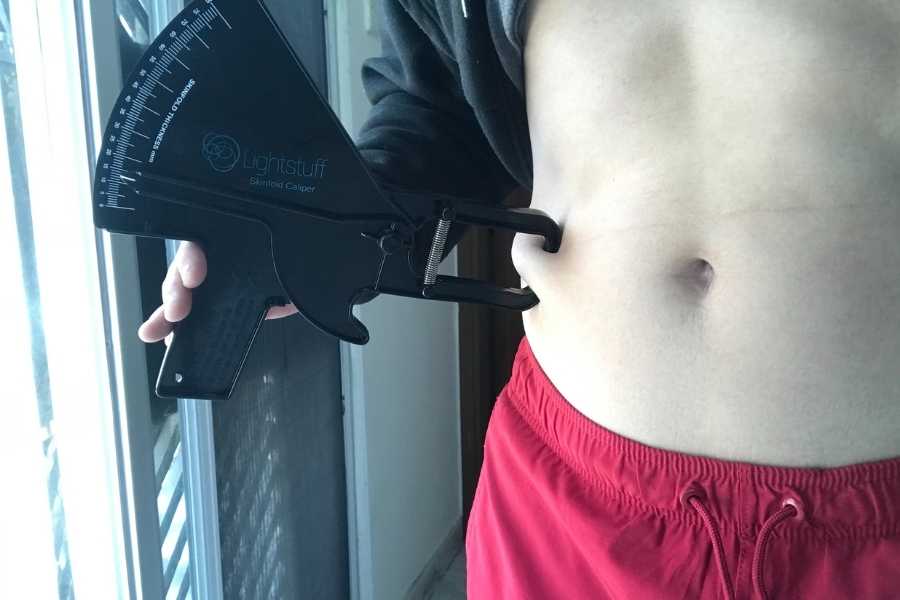
Here are the main reasons, in detail, why you lose your abs on a bulk:
1) Excess body fat
Bulking requires you to overeat calories (also called a caloric surplus). This is done to fuel the hypertrophy (muscle growth) process.
But it’s also possible to gain a significant amount of body fat too. Consequently, the extra body fat can cover visible abdominal definition and give the impression of lost abs (especially if it accumulates in the abdominal region).
It’s for this reason that people often bulk first and then cut afterward to shred fat.
Furthermore, it’s not uncommon to eat calorie-rich junk foods and sugary foods when bulking. This can drive further weight gain and lead to an even greater loss of ab definition.
2) Carb-Induced Water Retention
Eating a lot of carbs and salt (from junk food leads) lead to water retention. This happens because carbs and salt are absorbed and stored in the body with water. And when your body retains water, it can lead to bloating which decreases muscle definition in the whole body (including your abs).
3) Lack of ab isolation exercises
If you are bulking to build muscle fast, you’re likely focusing on heavy compound lifting and less likely to prioritize the isolation-type movements that directly target the abs. Combined with excess body fat stored during a bulk, this can lead to reduced definition in the abdominal muscles.
4) Poor genetics
Unfortunately, you may just be genetically predisposed to storing fat in certain areas like the abdomen. This can make maintaining visible abs (especially the lower six-pack) challenging even when you keep low body fat levels.
Is It Possible To Bulk And Still Keep Toned Abs?
Bulking strategy is critical for success in keeping your abs visible when bulking.

In the above comparison photos, you can see the impact of diet on my bulking results:
- Photo 1- this was when I went on a 6-month lean bulk (~7% calorie surplus). You can see that I gained muscle with minimal fat gains. As a result, I was able to keep my abs.
- Photo 2- this was when I went on a 3-month dirty bulk (~22% calorie surplus). You can see that I gained muscle but also put on a lot of fat. As a result, I lost a lot of my ab definition.
A 2013 study highlights the merits of lean bulking over dirty bulking for keeping visible abs.
In this study, the authors showed that after a certain threshold, the calories you consume are actually stored as fat rather than muscle!
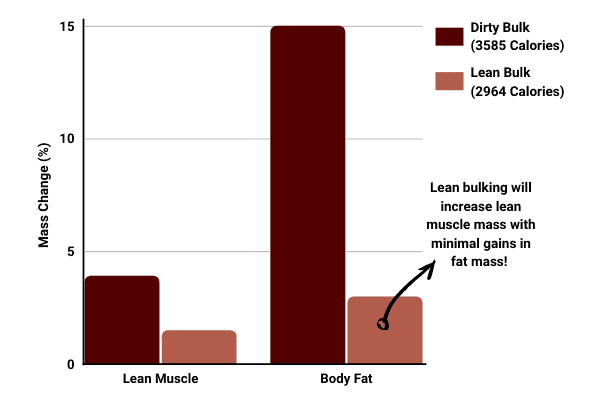
So if you’re a skinny person looking to bulk without losing your abs, I would highly recommend going on a lean bulk!
How To Lean Bulk And Keep Your Abs
A lean bulk method allows muscle to be built with minimal fat gains. It is the best way to retain abdominal definition. Success requires an individual to consume a mild 5-15% daily caloric surplus and at least 1g of protein per lb of body weight.
Here are some tips for you to lean bulk effectively and keep your abs from disappearing under a layer of fat
1) Avoid an excessive caloric surplus
A calorie surplus is important for building muscle. But you don’t want to overconsume and eat too many calories. Otherwise, you’ll start gaining too much fat and your abs will disappear in no time.
Proper bulking is a science.
Use a TDEE calculator to determine your maintenance calories. Now aim to eat 0-15% more than your maintenance calories to lean bulk.
This translates to ~200-500 extra calories per day for the average 130-200lb person training 3-5 times per week.
2) Track and log your calorie intake
Tracking your daily calorie intake is critical to ensure you don’t exceed your daily target.
Speaking from personal experience, it can be very easy to under/over-consume without a proper tracking method.
You can use a calorie-tracking app like MyFitnessPal to get started.
I prefer to use the old-fashioned calorie counting spreadsheet. This manual method requires you to work out the exact calories in each meal based on nutrition labels, but it’s more accurate because nutrition values for ingredients can vary greatly depending on where they are sourced from.
3) Eat at least 1g of protein per lb of body weight
Protein is essential for any muscle-building goal.
Not only is protein essential for muscle growth and repair, but it also contains just 4 calories per gram. This makes it a great macronutrient for building muscle and keeping to a sensible calorie intake.
This 2016 study indicates that a good intake to start with is 1g per lb of body weight per day. For example, a 140lb skinny guy should eat a minimum of 140g of protein daily (you can g to my other post for a meal plan example).
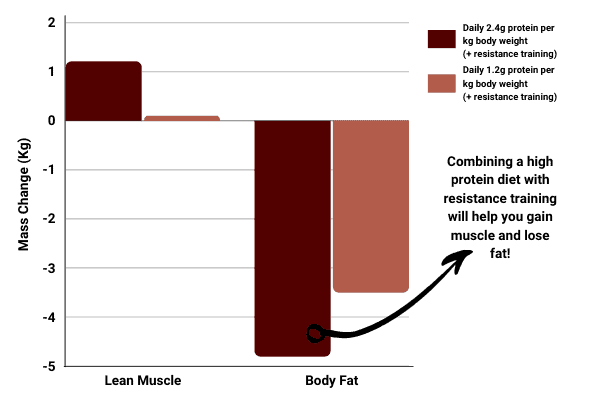
In the above study, the authors showed a correlation between higher protein intake, increased muscle mass, and decreased fat mass. That’s why bodybuilders often increase protein intake and decrease carb intake on a cutting phase to get shredded abs.
I like to set my protein intake to ~30% of my total calorie target.
4) Consume enough carbohydrates
A common misconception about building shredded abs is that carbs are your enemy.
This couldn’t be further from the truth.
Carbs are an essential source of energy (a gram of carb contains 4 calories), especially when you’re training hard. And intense resistance training is essential to keep your abs visible on a bulk.
Prioritize complex carbs like pasta, beans, whole wheat bread, potatoes, and cereals. Avoid too many simple carbs like confectionary and sugary foods.
I like to set my carb intake to ~50% of my total calorie target.
5) Do not cut fats
Another misconception about building ripped abs is fats are your enemy.
Again, they most certainly are not!
Healthy fats; like those found in salmon, mackerel, nuts, seeds, and vegetable oils provide a good source of energy for workouts (a gram of fat contains 9 calories).
Fats are also essential for vitamin absorption and anabolic (muscle-building) hormone production.
I like to set my fat intake to ~20% of my total calorie target.
6) Perform heavy resistance training
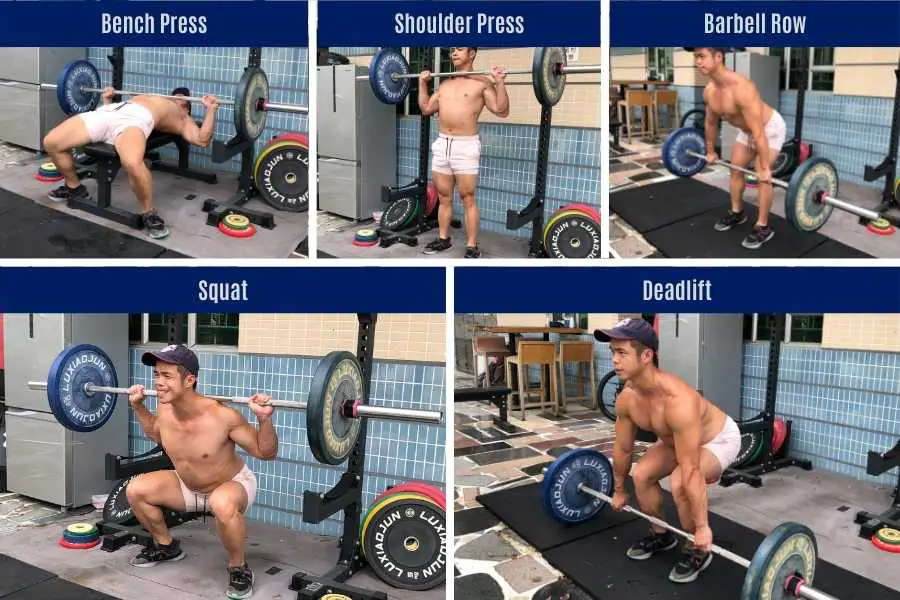
Heavy compound training is the best way to build muscle fast.
Prioritize the main lifts like the bench press, shoulder press, row, squat, and deadlift. These movements not only build full-body muscle, but they also burn a tremendous number of calories and work your core at the same time.
Aim to lift heavy (at least 80% of your 1 rep max) and work in the 5-8 rep range for compound lifts.
Skinny beginners can check out my home workout plan (with and without weights) to get started!
7) Target the abs with crunches, sit-ups, and leg raises

Whilst compound lifting should form the core of your muscle-building program, you shouldn’t neglect ab exercises.
In fact, working the core is essential for skinny people to build and maintain ab definition during a bulk.
Aim for 3-6 weekly sets of ab-specific movements such as planks, weighted sit-ups, crunches, and leg raises. Work in a higher rep range of ~12-15 reps per set.
Spread your sets over multiple training days for maximum benefits. Higher training frequencies are ideal for building muscle.
For example, I like to hit my abs twice per week after completing my main compound lifts.
8) Incorporate active rest days into your program
Cardio is generally not recommended for skinny people looking to bulk up and get strong fast. This is because you want to conserve your calories for muscle repair and growth.
However, if you’re trying to bulk up without losing your abs, then light-moderate cardio on your rest days (also called active rest days) can be extremely beneficial.
Not just any cardio though.
I found 1-2 HIIT sessions with weights per week, each lasting around 10 minutes, to be ideal. They burn a lot of calories, work your abs at the same time, and are great for shredding the core.
9) Be consistent and patient
The abs are one of the most difficult muscles to develop. The hard part is not in building the muscle itself, but in keeping a low enough body fat percentage to reveal them.
It’s important to stick to your lean bulk program and be consistent with your training.
Patience is essential when you are trying to bulk without losing your abs.
Best Foods To Lean Bulk And Keep Your Abs
A balanced whole-food diet is ideal for lean bulking. Whole foods are unprocessed and often contain high levels of lean protein, healthy fats, and complex carbohydrates. This makes them great for building muscle and maintaining a low body fat percentage.
Unlike processed foods, whole foods are usually harder to digest. This means your body has to work harder and expend more energy for digestion. Ultimately, this helps to keep body fat low and prevent you from losing your abs on a bulk
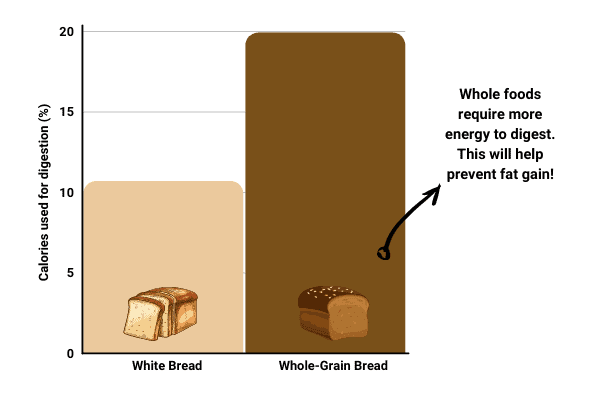
In fact, a 2010 study showed that simply swapping white bread (processed food) for brown bread (whole food) in a sandwich can increase the energy required for digestion by almost 50%!
Here are my examples of whole food ingredients to include in your diet for a lean bulk:
- Potatoes. These are filling but they also have a relatively low calorie density compared to other carbs. This makes them great for sticking to a sensible calorie intake.
- Wholewheat pasta. High in protein and complex carbs, pasta is a staple of my lean-bulking diet.
- Oats. High in protein, complex carbs, and fiber.
- Oily fish. High in protein and healthy fats. Delicious grilled or steamed.
- Lean beef. Extremely high in protein. Choose lean cuts like sirloin, rump, and flank.
- Poultry. Chicken and turkey breast meat are low in fat and high in protein.
- Egg whites. Low in calories and high in protein. Can be mixed into stews and curries for a protein hit.
- Fresh fruit and veg. Essential for fiber, minerals, and vitamins.
- Tofu. Low calories with high protein content.
- Soy milk. A low-fat alternative to cow milk.
Ideal Bulking Duration To Keep Abs
As a general guideline, a 1-3 month bulking duration is recommended to prevent the loss of visible abs. Longer bulking periods of 3-6 months can also be completed if a mild caloric surplus is maintained. Ultimately, the ideal duration will depend on individual body composition and goals.
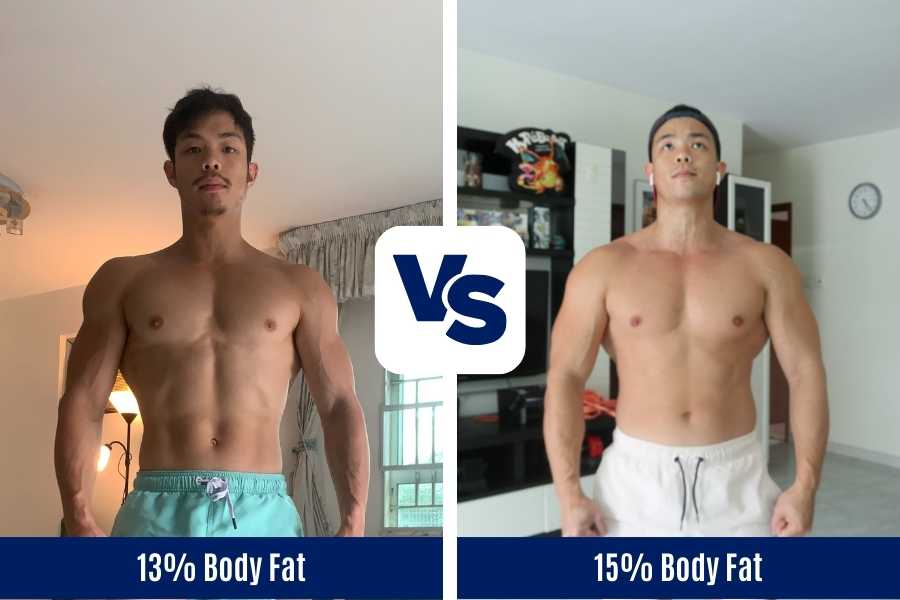
When determining the ideal bulking duration, it’s important to understand that we all have different body compositions and that a low body fat percentage results in more visible abs and vice versa.
For most people, a body fat % between 13-15% is sufficient to show shredded abdominal definition. Thus, the objective is to bulk and stay under 13-15% body fat. You can use this body fat percentage chart by Train Beyond The Box for guidance.
The problem with bulking for too long is that the longer you bulk the more body fat you gain. Thus, most people cannot bulk for too long before their visible abs are lost under a layer of fat.
Of course, the ideal bulking duration varies depending on your current body fat percentage, as follows:
| Starting Body Fat % | Recommended Lean Bulking Duration |
|---|---|
| Very skinny (<12% BF) | 3-6 months |
| Skinny (13-15%) | 3 months |
| Skinny Fat (15-20% BF) | Cut first then bulk |
If you’re naturally very lean then you can bulk for longer. But if you’re skinny-fat, you may want to opt for a shorter bulking duration or even cut first before you bulk.
Throughout your bulk, it’s important to continually assess your body fat % and to keep to a sensible lean bulking caloric surplus. Stop when you start exceeding 15% BF and avoid exceeding 500 surplus calories daily.
Can You Lean Bulk And Get Abs If You Don’t Have Them Already?
It’s possible to lean bulk and build visible abs even if they are not yet visible. However, it’s essential to focus on building muscle whilst minimizing fat gain. This can be achieved through heavy resistance training and consuming maintenance calories daily.
Getting visible abs when you don’t currently have them is a bit trickier than maintaining the visible abs that you currently have.
However, though difficult, it can be done.
How?
Consume your daily maintenance calories and ensure a high protein intake. All the while, lift heavy on the compound movements and incorporate ab-isolation movements in your program.
The aim is to build your ab muscles whilst keeping fat gains minimal.
What To Do If You Are Losing Your Abs On A Bulk
Here are 4 adjustments you can implement into your training and dieting if you find yourself starting to lose your abs during a bulk:
1) Reassess and adjust your calorie intake
Gaining too much body fat too quickly is the main reason why you would lose your abs when bulking. this almost always is the result of eating too many calories. Make sure you’ve accurately determined your maintenance and surplus calories, and ensure you are calorie counting properly.
2) Examine and adjust your diet
Extending from the previous point, identify any unaccounted hidden calories you may be consuming without knowing.
Common sources of hidden calories include:
- Processed foods.
- Cooking oil and dressings.
- Untrimmed meat fat.
- Sugary drinks.
- Fatty drinks.
Ditch these foods for healthier alternatives or reduce intake.
3) Increase cardio on rest days
Start doing cardio (e.g. weighted HIIT workouts) on the days you’re resting from your primary strength training program.
These are called active recovery days and they can help you burn fat whilst maintaining muscle mass.
If you’re already doing active recovery workouts, you can increase the duration or intensity. But avoid session durations over 30 mins to prevent overtraining.
4) Increase weekly sets of ab exercises
Visible abs can be developed by increasing muscle size as well as decreasing body fat.
If you aren’t already doing them, start including g ab-specific movements such as plankls, crunches, sit-ups, and leg raises. Add a dumbbell or kettlebell for an extra challenge.
If you’re already doing ab exercises, make sure you’re lifting at a sufficient intensity for muscle
Conclusion
If you currently have visible abs, it is possible to bulk up without losing them.
Remember, maintaining a visibly defined body while bulking is a delicate balance between gaining muscle and minimizing fat gain.
This can be achieved with a lean bulking strategy. Keep your calorie intake within 0-15% above maintenance and consume at least 1g of protein per lb of body weight. Avoid processed and junk foods. Include complex carbs and healthy fats.
Combine this with a weight training program that prioritizes heavy compound lifting but also includes crunches, sit-ups, and leg raises to target the core.
You may also be interested in the downloadable Kalibre Blueprint PDF which details exactly how I gained 40lbs of lean muscle (it’s 100% free!). It details the exact exercises and nutrition (with printables) I used to go from skinny to ripped!


